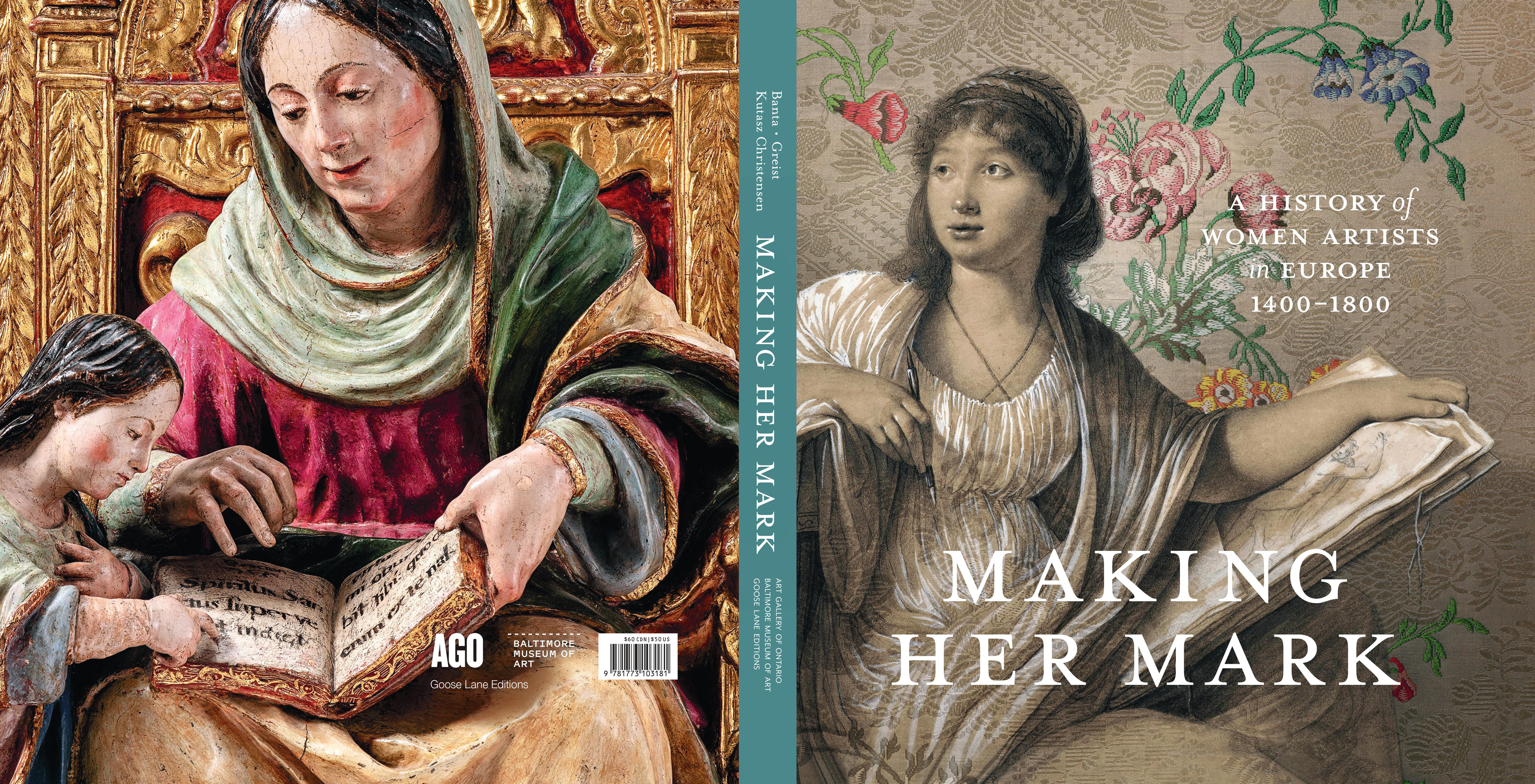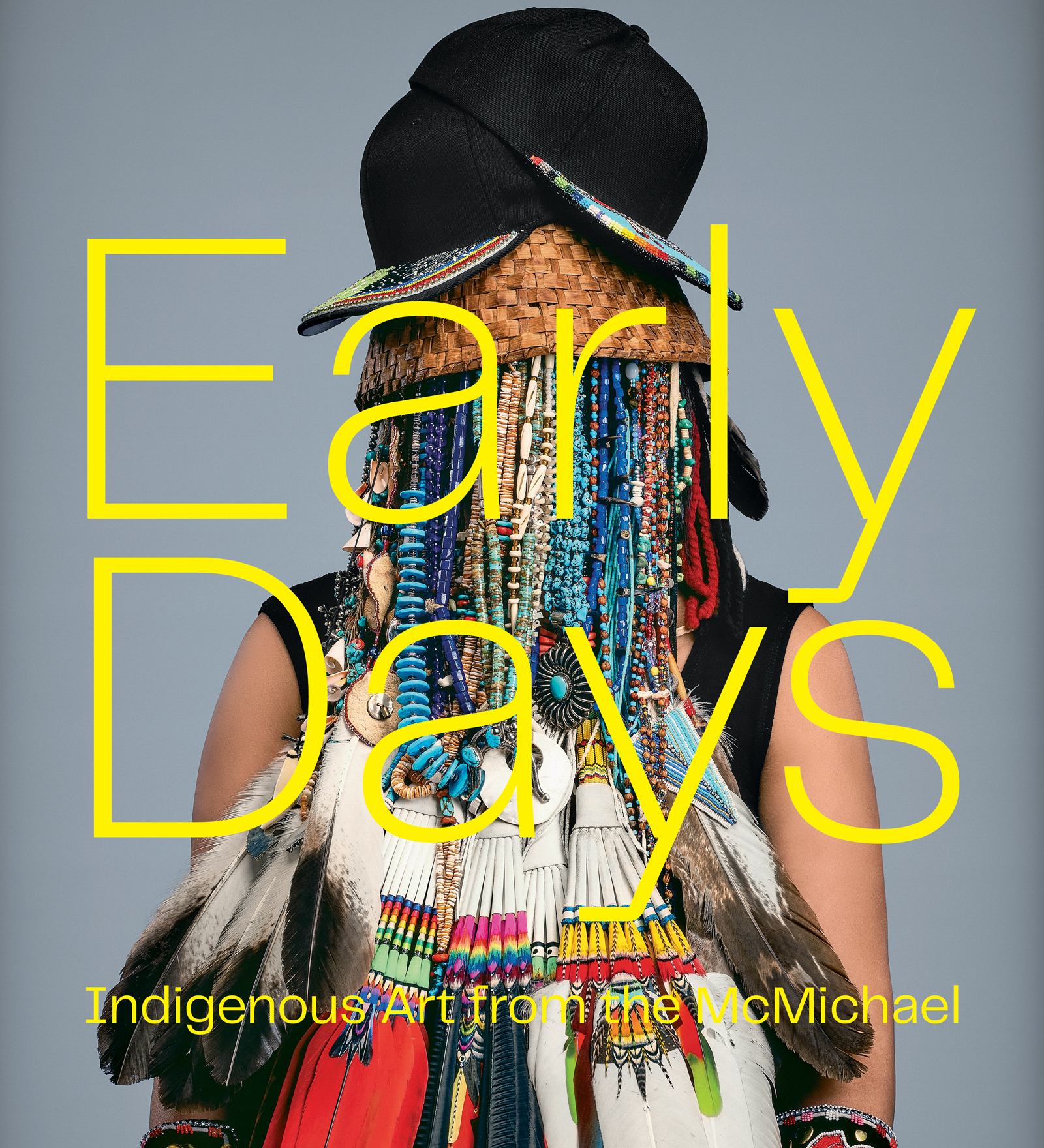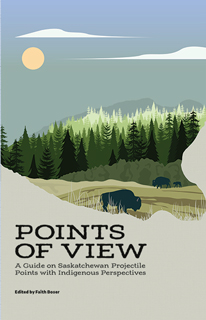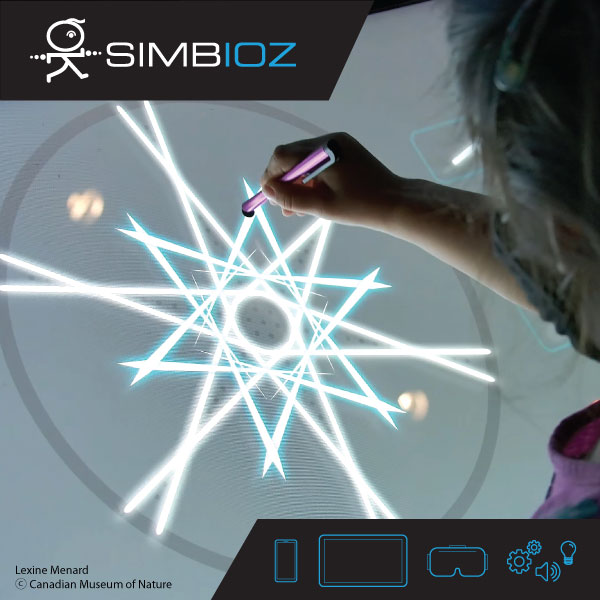CMA Outstanding Achievement
Research
For research activities carried out in museums or applied to museum practice that contributes to the development of new knowledge and understanding.
Winner
- Art Gallery of Ontario | Making Her Mark
- McMichael Canadian Art Collection | Early Days: Indigenous Art from the McMichael
- Saskatchewan Archaeological Society: Points of View | A Guide on Saskatchewan
Art Gallery of Ontario | Making Her Mark

Covers of Making Her Mark. Photo — Art Gallery of Ontario.
Making Her Mark illuminates the astonishing diversity and breadth of women’s contributions to art of the pre-modern era (c. 1400–1800), gathering just over 250 objects—including paintings, prints, scientific illustrations, sculpture, textiles, metalwork, furniture, and ceramics—by makers of differing social status from nuns to nobles, dressmakers to dilettantes, peasants to publishers. In this important re-examination of early modern European art, an international team of scholars and curators assess the critical concepts and apparatuses that have shaped Western culture’s understanding of the exceptional artist and what constitutes great art.
This catalogue accompanies the exhibition of the same name, lavishly illustrating and documenting (her) story through nine thematic essays that delve deeper into the thesis of the exhibition, and 17 shorter essays organized by media to focus on contextualizing every object exhibited at both venue presentations of the exhibition.
The first half of the catalogue takes a thematic approach with critical essays including: an anchoring essay that questions the monographic approach as the gold standard for understanding early modern European art—how this bias towards individual exceptionalism resulted in the omission of women artists from the Western canon—and in pushing back against this systemic format by calling attention to the silent productivity and multi-prevalence of the so-called anonymous, un-named, marginalized, “unexceptional” women makers as worthy of inclusion on museum walls and in history books. The second half of the catalogue is a tour-de-force that visually documents and discusses all 250+ exhibited objects, which are organized into 17 media-based essays.
Ambitious in its scope, Making Her Mark is a bold corrective to the historical assumption that female artists of the past were rare and that their work was unremarkable. The result is a dynamic introduction to scores of women artists whose names are entirely new and a long-overdue reassessment of the art, culture, and history of early modern Europe.
McMichael Canadian Art Collection | Early Days: Indigenous Art from the McMichael

Cover of Early Days. Photo — McMichael Canadian Art Collection.
Early Days: Indigenous Art from the McMichael is more than an exhibition catalogue. It is a publication that takes the pulse of Indigenous art and art history in Canada in the present moment. The publication features 71 essays, interviews, and personal responses that examine art made by Indigenous people in Canada from coast to coast to coast, from the late eighteenth century through to today. Under the leadership of editors Bonnie Devine, Sarah Milroy, and John Geoghegan, more than 60 authors, the lion’s share of whom are Indigenous, contributed reflections on more than 200 artworks and cultural belongings made by Indigenous artists.
Produced to accompany the exhibition Early Days: Indigenous Art at the McMichael presented at McMichael in 2020 and currently on an international tour, the publication Early Days includes many more artworks than were included in any of the exhibition’s iterations. The publication format allowed for the sharing of more artworks, ideas, and research than the exhibition could contain. At more than 400 pages, it is the largest book ever produced by McMichael. The publication offered the opportunity to reflect on the history of Indigenous art at McMichael, with several of the contributions looking back at the sometimes-difficult history of Indigenous art and presence at the gallery.
Saskatchewan Archaeological Society: Points of View | A Guide on Saskatchewan Projectile Points with Indigenous Perspectives

Points of View: A Guide on Saskatchewan Projectile Points with Indigenous Perspectives. Photo — Saskatchewan Archaeological Society.
Points of View: A Guide on Saskatchewan Projectile Points with Indigenous Perspectives blends Indigenous ways of knowing and archaeology’s understanding of projectile points. Unique to this book is the integration of Indigenous perspectives by a diversity of voices. Placement of these chapters at the beginning is deliberate and sets the tone for a ‘two-eyed’ approach and ‘braided’ knowledge systems in archaeology. An artist sees stones as sacred beings and projectile points are transformations from the landscape – they are sculpted, deliberately shaped. The complexity of creating tools from stone is explained both in words and ‘in action’ with 13 videos accessible via a QR code. The importance of landscape in understanding the past is told through an interview with one of the first Indigenous archaeology graduates from the University of Saskatchewan. A chapter on responsible stewardship helps readers understand how they can respectfully care for these objects.
To help users identify points, the book has a colour-coded field guide section featuring the names, date ranges, geographical distribution, and descriptions of 40 of the most common point types found across the province. Images were purposely selected to highlight the variation that can exist for different points, including broken and reworked examples. Defining attributes are outlined on a line drawing illustrating flaking patterns. Additional chapters explain the basics of archaeological method and theory, other stone tool types and lithic material. Also provided is an explanation of current legislation regulating archaeological heritage and the ethical considerations when working with collections of Indigenous heritage.
